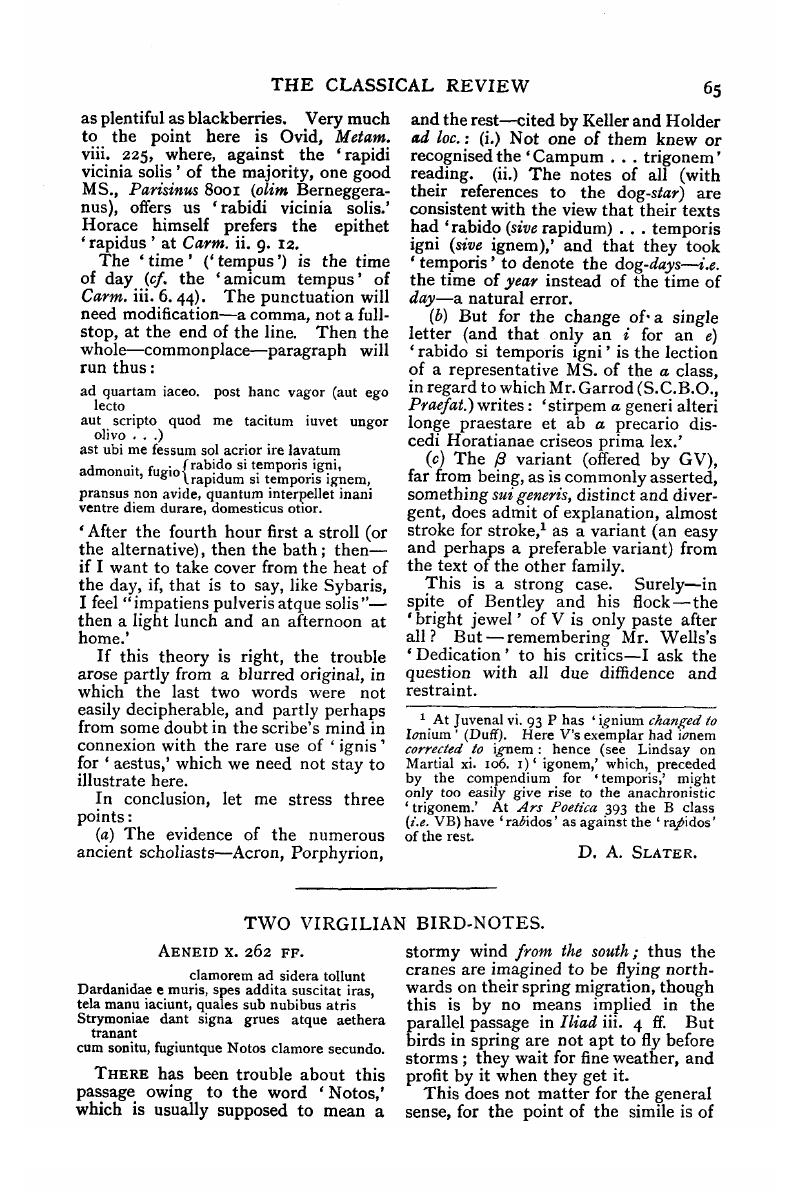Article contents
Two Virgilian Bird-Notes
Published online by Cambridge University Press: 27 October 2009
Abstract

- Type
- Review Article
- Information
- Copyright
- Copyright © The Classical Association 1918
References
page 66 note 1 Cf. ix. 668 ff.
page 66 note 2 Nat. Hist, of the Bible, p. 240.
page 67 note 1 He also refers to a writer unknown to me—Vervard, , Account of Divers Choice Remarks made in a Journey' p. 359 (1701)Google Scholar—but adds ‘sed nee is scientia naturae satis fuit instructus.’
page 67 note 2 Pliny x. 126–7. The translation is that of our oldest English ornithologist, William Turner, whose work was edited by Mr. A. H. Evans at Cambridge in 1903. The original Latin of the important sentence is as follows: ‘scrobes excavare rostro, inde crate consternere et operire terra quae ante fuerit egesta: in his fetificare.’ My friend, Mr. O. V. Aplin, described the nesting of our Shearwater in the Zoologist for 1902, p. 16: ‘They breed chiefly in a steep grassy cliff … some in holes under the rocks, where they emerge from the turf; others in long clefts in and winding passages among the rocks.’ This was in Bardsey Island, North Wales. In St. Kilda the birds make their own burrows, as they seem to have done in Italy, but if they find a rabbit-burrow to hand they use it (Seebohm, Eggs of British Birds, p. 72).
page 67 note 1 Willughby (edited by Ray) has a chapter on the ‘ Artenna of the Tremiti Islands,’ which comes through Aldrovandus from Gesner, who seems to have seen a specimen. Aldrovandus' description suits the Shearwater very fairly well: upper parts dusky or dark ash, under parts white, bill hooked, size that of a ‘good corpulent hen.’
- 1
- Cited by




